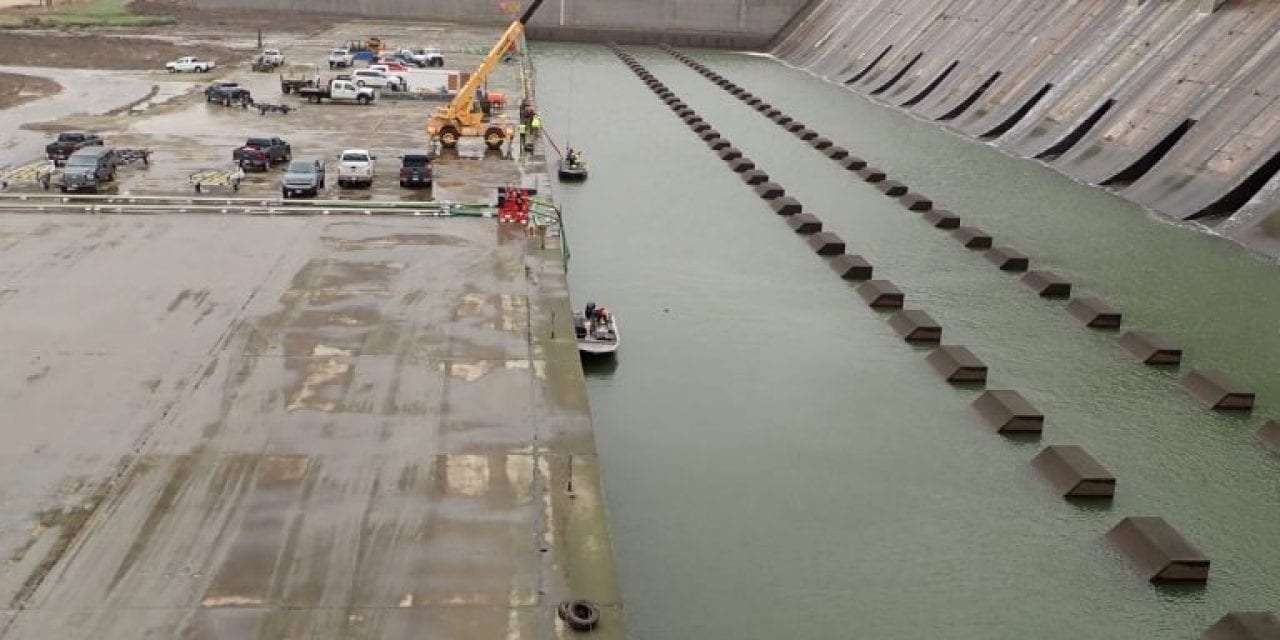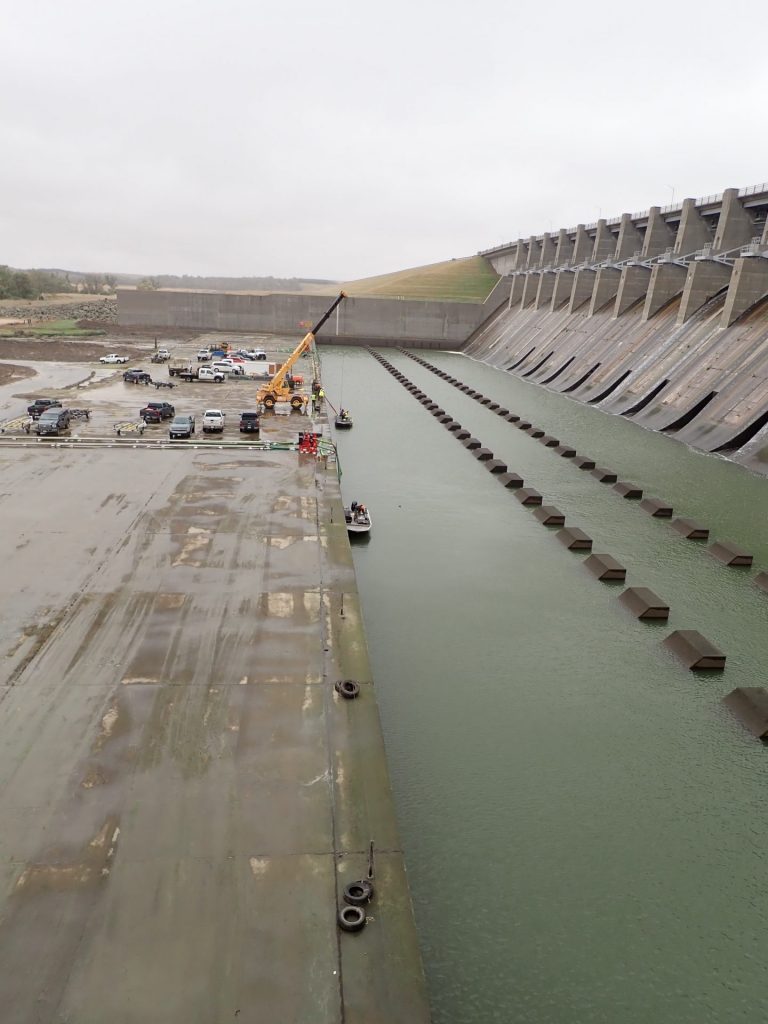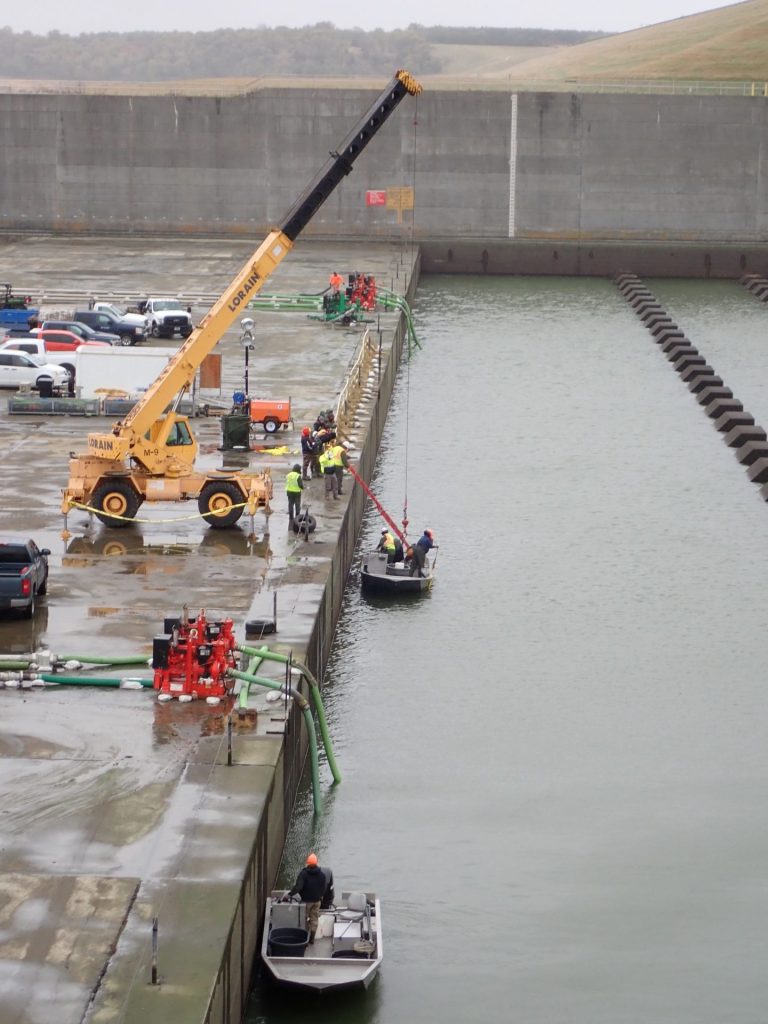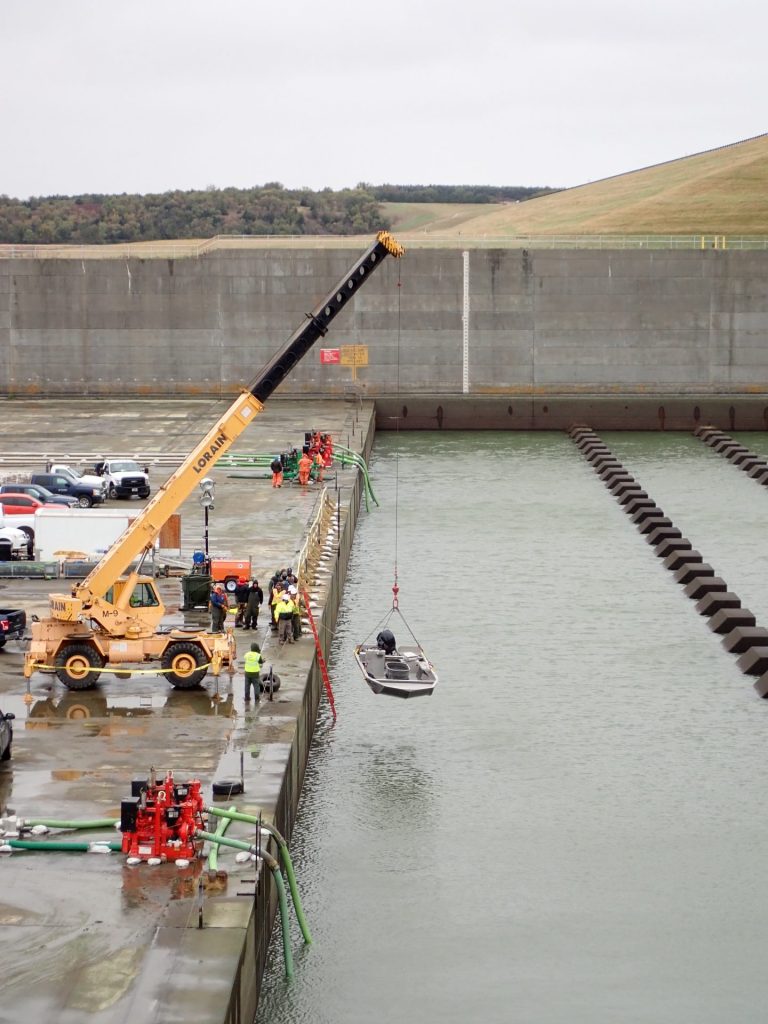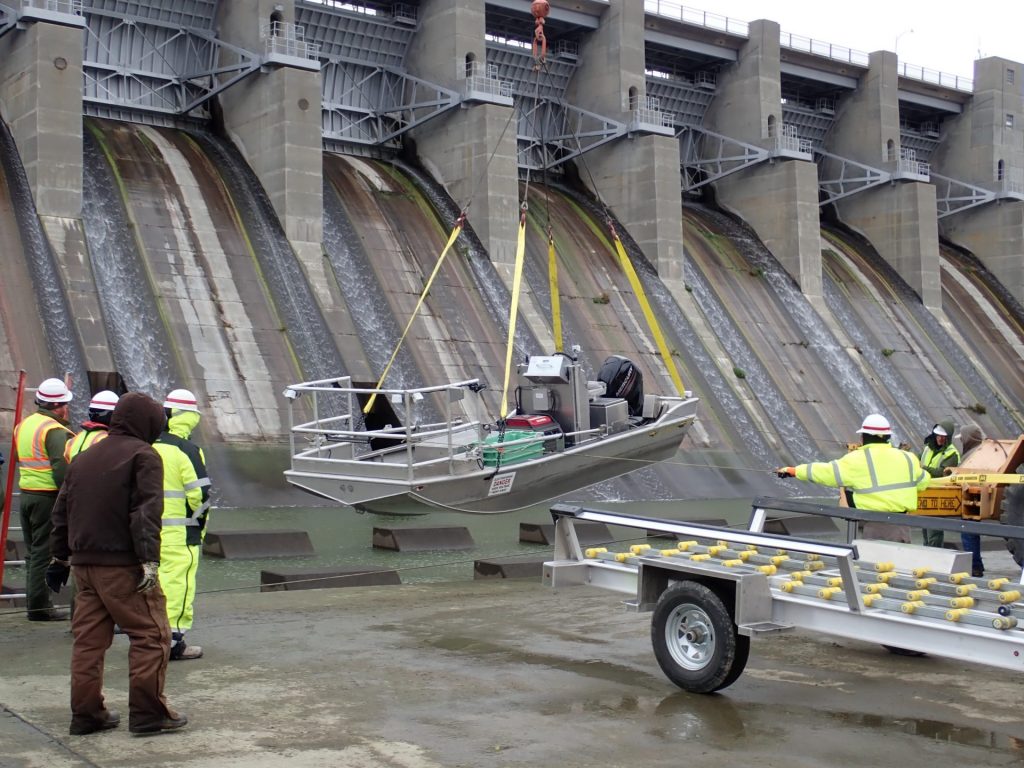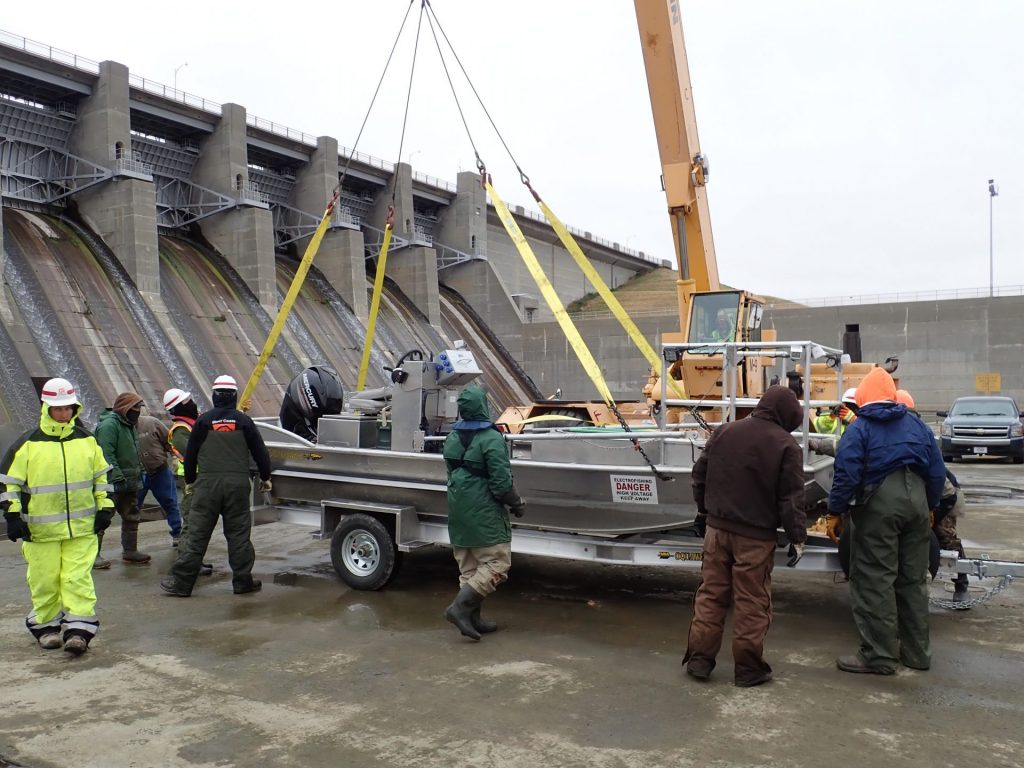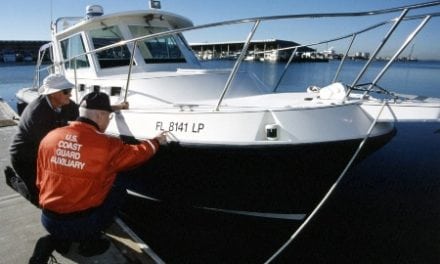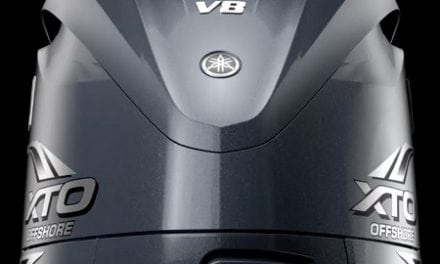By now you may have seen pictures and information on FaceBook about the recent salvage of fish from the spillway below Harlan County Dam. Yes, I am going to repeat some of that here to spread it around even more, and offer some comments as well. . . .
Water is drained from the spillway below Harlan County dam once every twenty years or so. That draining is necessary for inspection and repairs. When that water is drained, fish present in the spillway would perish. So, the last couple of times this has been done, the Nebraska Game & Parks Commission, has worked with the U.S. Army Corps of Engineers to rescue as many fish as possible. This was a relatively big operation over a couple of days employing several pumps, a crane, boats, and crews to operate all the equipment, capture and haul fish.
I was not able to get outta the office to help, but instead showed up like a blister when the work was over on the last day. I can tell you this, the first day the weather was nice, the second day it was miserable. The work went on.
Once water releases stopped, pumps were used to remove the rest of the water from the stilling basin.
The crane was used to lower boats into the stilling basin, and then to haul fish up and out. When all the work was done, the crane was needed to recover boats. You thought operations on a boat ramp were complicated!
As you can see, electrofishing boats were used to capture most of the fish, but once all the water was pumped out, the last few fish were captured by seines, dip-nets, and even by hand.
I did not get any pictures of fish. If you want to see some, the Harlan County Lake U.S. Army Corps of Engineers FaceBook page has a bunch. I know everyone is curious, but no, there were no catfish found that were large enough to eat a person. A 48-inch flathead of about 50 pounds was the largest fish captured. From what I have heard, the biggest wiper was 30-inches and some nice walleyes were saved.
Here is the tally that has been floating around on FaceBook:
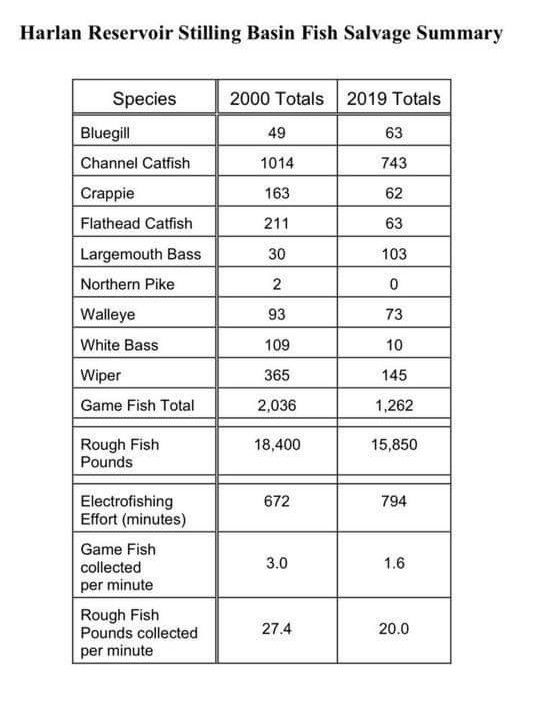 This is where I want to make some comments: First of all, I would not read a whole lot into the fact that there were less fish salvaged this time compared to twenty years ago. There has been a lot of water flow through Harlan at times this year, and perhaps more fish left the spillway and went downstream? On the other hand, to reduce flooding downstream, there was a lot of water stored in Harlan this year, so perhaps there were less fish that entered the spillway to begin with? My point is a lot of variables affect the migration of fish out of the reservoir or up the river into the spillway, and who knows what less fish really means? This much I will tell you, as soon as water releases start again, which may be as soon as next week, there will be fish going back into the spillway.
This is where I want to make some comments: First of all, I would not read a whole lot into the fact that there were less fish salvaged this time compared to twenty years ago. There has been a lot of water flow through Harlan at times this year, and perhaps more fish left the spillway and went downstream? On the other hand, to reduce flooding downstream, there was a lot of water stored in Harlan this year, so perhaps there were less fish that entered the spillway to begin with? My point is a lot of variables affect the migration of fish out of the reservoir or up the river into the spillway, and who knows what less fish really means? This much I will tell you, as soon as water releases start again, which may be as soon as next week, there will be fish going back into the spillway.
Game fish that were saved were released back into Harlan County Reservoir.
“Rough fish” means species like common carp, buffalo, gizzard shad, gar, carpsuckers, etc. Those fish were disposed of.
I have often said that from a biology/fish community standpoint, fish salvage operations are a waste of time. Well over half of the fish salvaged this time were channel catfish. Do you think an additional 743 channel catfish being placed back in 13,500-acre Harlan County Reservoir will even be noticed? Is there any lack of channel catfish in Harlan County Reservoir to begin with? The same could be said for the numbers of any of the game fish that were stocked back into the reservoir.
However, do not misunderstand me. From a public relations standpoint, fish salvage operations can make all the sense in the world. No one wants to see a bunch of fish dying in a water-less stilling basin. No one wants to see a single big flathead, wiper, or walleye perish without being caught. Yes, a darned lot of man-power and money was invested in saving 1,262 fish from the Harlan spillway. If just one of those fish is caught, the angler catching it will tell you it was worth every penny.
The post Harlan Spillway Fish Salvage appeared first on Nebraskaland Magazine.

